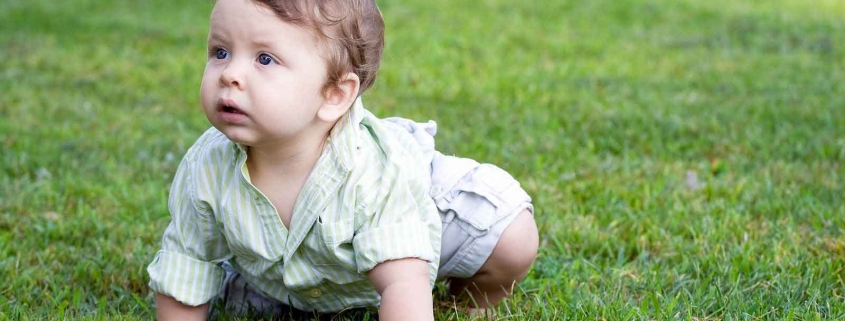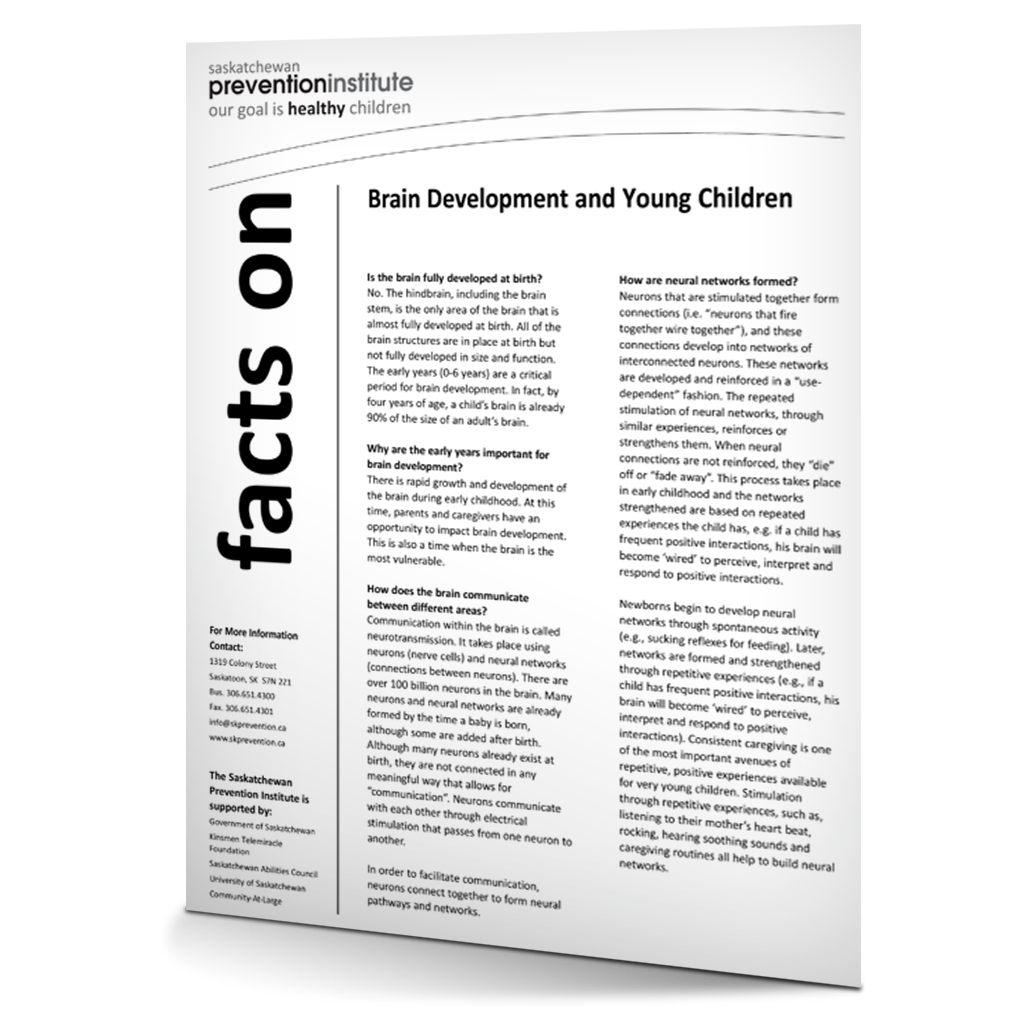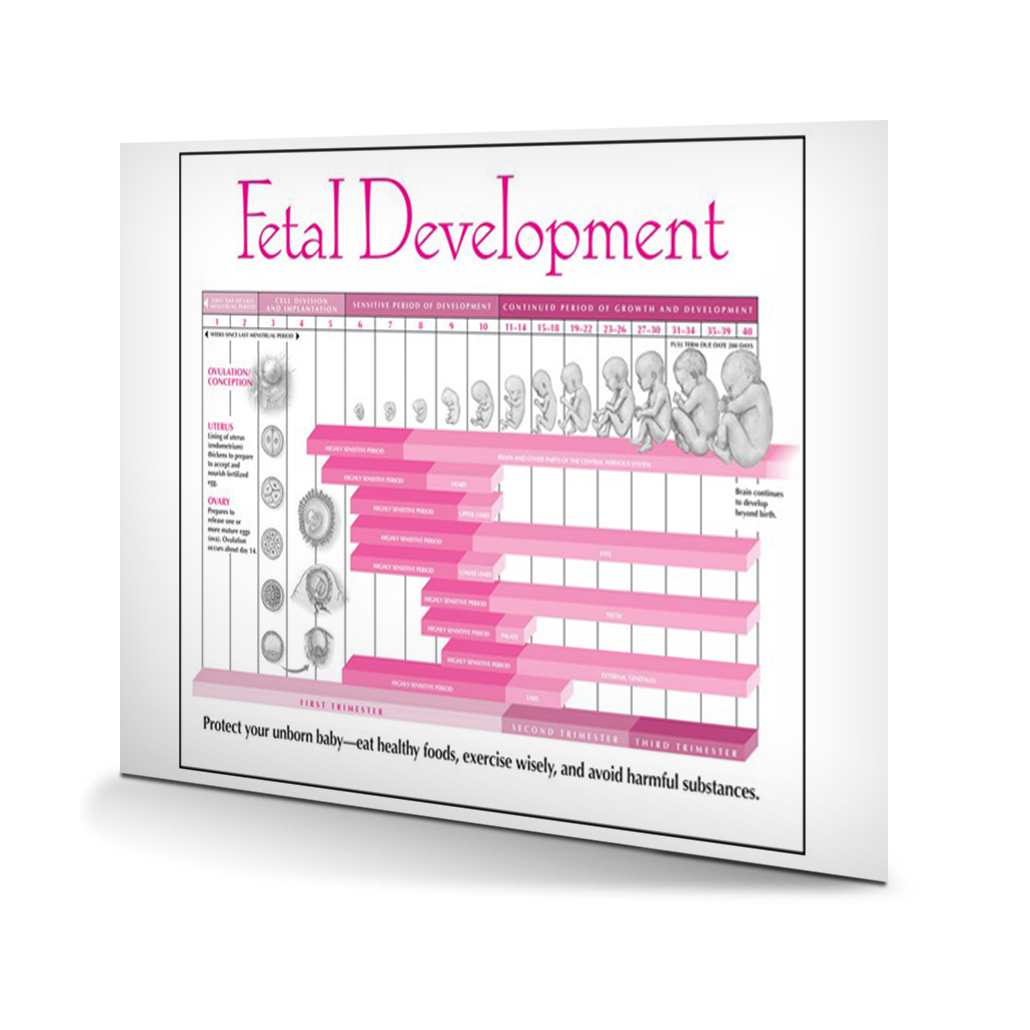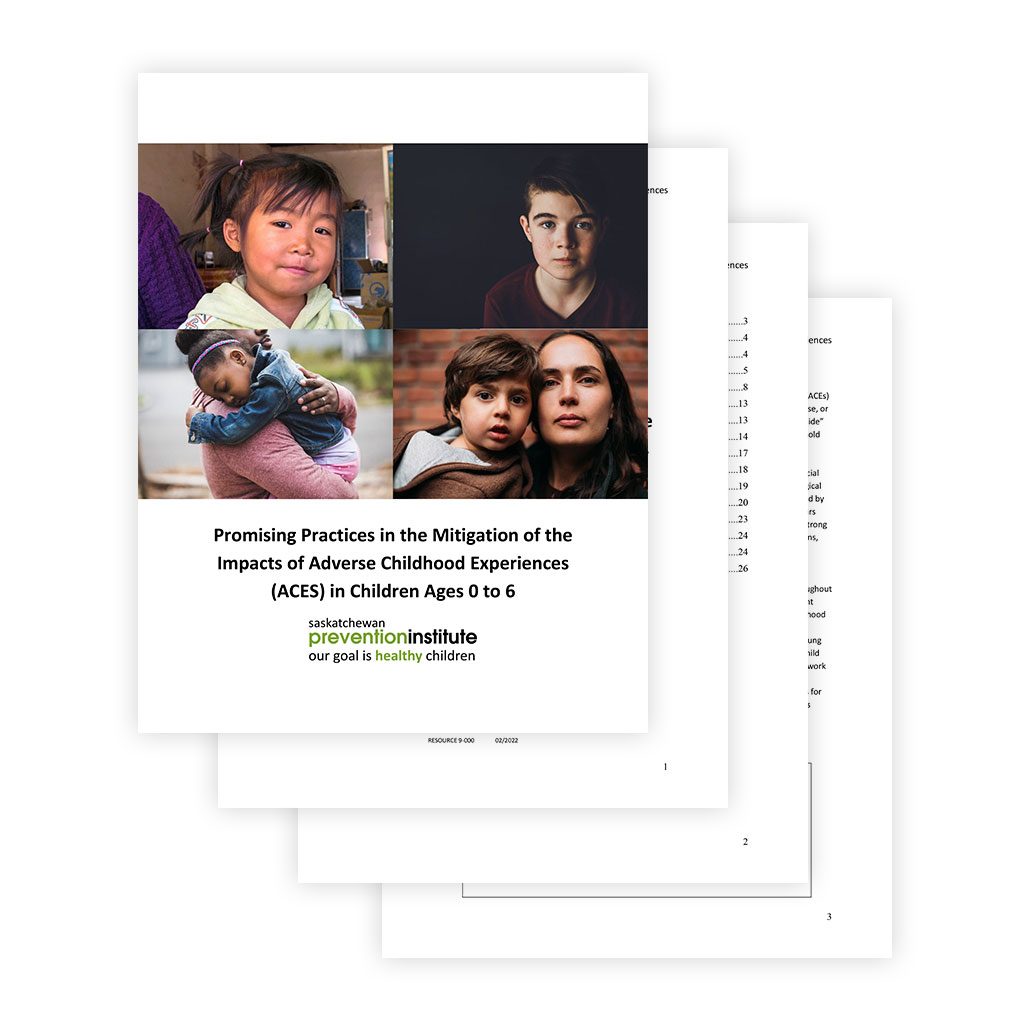
- Display 15 Products per page
-

Brain Development and Young Children
Fact Sheet, 2010
This fact sheet provides an overview of early childhood brain development and stresses the influences that experience and the environment have on optimal development. Early childhood is a time when there is rapid growth and development of the brain. At this time, parents and caregivers have an opportunity to impact brain development. This is also a time when the brain is the most vulnerable.
SKU: 8-702 -

Hold onto Your Kids
Video, 2008
This DVD explores the importance of attachment in the development of children. In some cases, these relationships do not last for the length of time that children are still maturing. Often times, children turn their attachment relationship from caregivers to peers. However, peer relationships do not have the same benefits for the child as those with caregivers.
SKU: 8-V-804 -

Fetal Development
Poster, 2008
These 8.5 x 11 inch posters, developed by Childbirth Graphics, assist healthcare professionals in discussing alcohol use with their patients. Although these posters do not focus on FASD, they can be used to help patients understand that alcohol is one of many factors which can impact the development of the fetus.
Audience: Healthcare Professionals and their PatientsSKU: 3-143 -

Promising Practices in the Mitigation of the Impacts of Adverse Childhood Experiences (ACES) in Children Ages 0 to 6
Report, 2022
Adverse childhood experiences (ACEs) are childhood events that cause harm or distress and, as a result, disrupt the child’s health and development. The purpose of this report is to define ACEs and their impact on development, health, and well-being; describe how ACEs are identified in children ages 0 to 6; and investigate evidence-based practices being used with children ages 0 to 6 and parent/caregiver-child dyads to mitigate (make less severe or harmful) the impacts of ACEs in childhood and beyond.
“In November 2022 an Executive Summary was added to the report”.
SKU: 9-000 -

Listening to Baby
Video, 2007
Listening to Baby is an interactive DVD about the importance of supporting attachment by noticing, understanding, and responding with sensitivity to babies’ cues. This DVD is a rich and multifaceted teaching tool developed primarily for a parent audience but with potential to be used in education and other settings. Messages are told mostly in the voices of parents and illustrated by beautiful images of their babies, from 2 weeks to 16 months of age.
SKU: 5-V-500 -

The Six Core Strengths for Healthy Childhood Development
Video, 2004
In this DVD, Dr. Bruce Perry outlines the core strengths that, if developed in early childhood, help children to grow into creative, social, humane, and caring humans. These core strengths are only expressed if a child is given opportunities to develop them. They include attachment, self-regulation, affiliation, attunement, tolerance, and respect.
SKU: 8-V-809 -

For the Child: Information on Mental Health and Advocacy for Resource Parents (I Am Your Child Series)
Video, 2007
- Understand the most common children’s mental health problems
- Navigate the local mental health service delivery system
- Develop alliances with birth parents, school systems, mental health providers, and case workers
- Feel increased comfort with seeking mental health services
- Recognize the rights and responsibilities of foster children, birth parents, kinship providers, foster parents, and caseworkers
- Identify who to call, what to say, and where to go to obtain the right services for the children in their care
- Be an effective advocate for the children in their care
SKU: 5-V-516 -

The Heart of Learning
Video, 1999
Much of the way children think and feel about themselves and their world is determined in the first three years of their lives. In this formative time, the brain is developing a complex “wiring” system, making connections that will strongly influence children’s patterns of emotional, social, and psychological behaviour – and how well they can learn, handle stress, thrive, and function in the world. The video kindles deep, natural parenting instincts, while providing clear and accessible strategies for loving and nurturing interaction with children.
SKU: 5-V-508 -

Power to Parent: Helping Children Grow Up
Video, 2008
This is part 2 of a 3-part series. This course is recommended for professional development purposes and should be used in a consecutive fashion as each session builds on previous information. As suggested by the title, the DVD speaks to the topic of helping children grow up. Sessions are broken down as follows:
- Parents and the miracle of maturation
- How to give children the rest they need to grow
- Keys to independence, individuality, and responsibility
- How to help children become their own persons
- Keys to resilience, resourcefulness, and recovery
- How to help children accept limits and adapt to circumstances
- Keys to emotional and social maturity
- Helping children become considerate and find their self-control
SKU: 8-V-806 -

A Child with Special Needs (I Am Your Child Series)
Video, 2005
Finding out that your child has special needs is the beginning of a remarkable journey. Whether your child is developmentally delayed or has a significant physical disability, you want your child to be happy and safe, and to develop to her fullest potential.
In this video, families of children with special needs share their stories to help others in similar circumstances understand that, while every child is unique, there are common experiences, emotions, and challenges families are likely to encounter as they work to help their child.
This video provides information on:
- What to do when you find out that your child has a special need
- Moving from confusion and grief to acceptance and empowerment
- Finding answers and getting help
- Speaking up as your child’s best advocate
- The importance of looking beyond the diagnosis
- Focusing on your child’s unique strengths
SKU: 5-V-513 -

Understanding Traumatized and Maltreated Children: The Core Concepts
Video, 2004
This DVD consists of seven, half-hour presentations focused on child maltreatment and trauma. Dr. Bruce Perry, from the ChildTrauma Academy, presents information on the following topics:
- Challenging our beliefs
- The amazing human brain
- How the brain develops: The importance of early childhood development
- Neglect: How poverty of experience disrupts development
- The fear response: The impact of childhood trauma
- Living and working with traumatized children
- Violence and childhood
SKU: 8-V-810 -

Babies
Video, 2009
Experience joy and happiness at its purest in this life-affirming, universal celebration of the magic and innocence of babies. Proving that if you surround your baby with love, it doesn’t matter what culture you’re from or what childrearing practices you follow. “Babies” travels the globe following four children from vastly different corners of the world – Ponijao from Namibia, Bayarjargal from Mongolia, Mari from Tokyo, and Hattie from San Francisco.
SKU: 5-V-509 -

Safe Sleep Evidence Summary
Report, 2017
This evidence summary summarizes evidence based guidelines on safe sleep and is intended for use by policy makers, healthcare providers, and service providers.
SKU: 2-438 -

Making Sense of Play
Video, 2011
In this two-hour seminar, Dr. Gordon Neufeld explores what play is, the benefits of play, and what is needed for children to play. Dr. Neufeld explains that play is not an option; it is a developmental requirement. Through various examples, he explores the three basic tenants of play: 1) Play is not work, 2) Play is expressive and exploratory, and 3) Play is “not for real”.
SKU: 8-V-803 -

Protect Your Baby’s Head Shape: Preventing Flat Spots on Your Baby’s Head
Brochure, Revised 2023
This brochure provides parents and caregivers with information on positional plagiocephaly, or “flat head”. Information includes how to prevent flat spots and what to do if a flat spot is found on baby’s head.
SKU: 4-101
